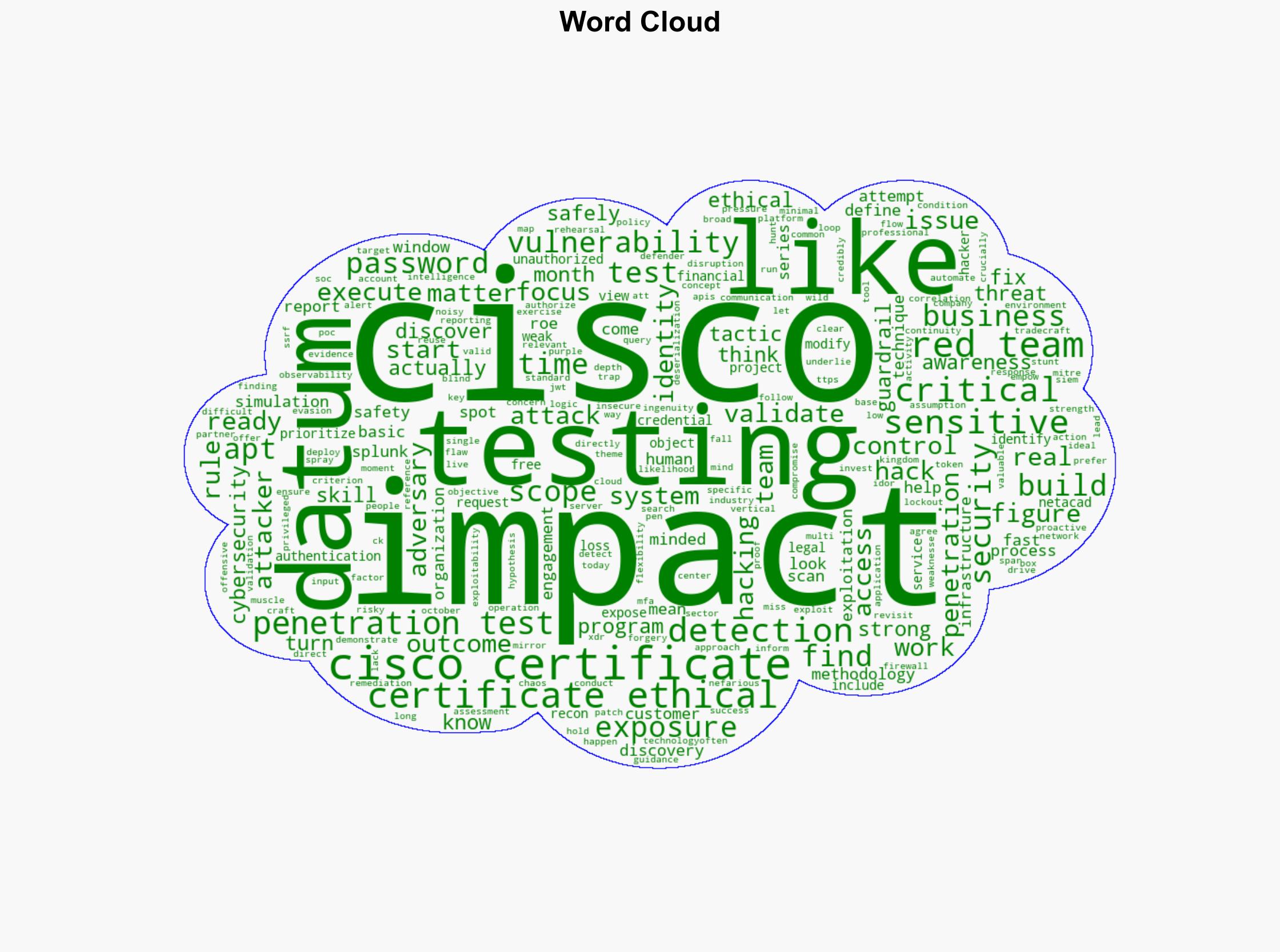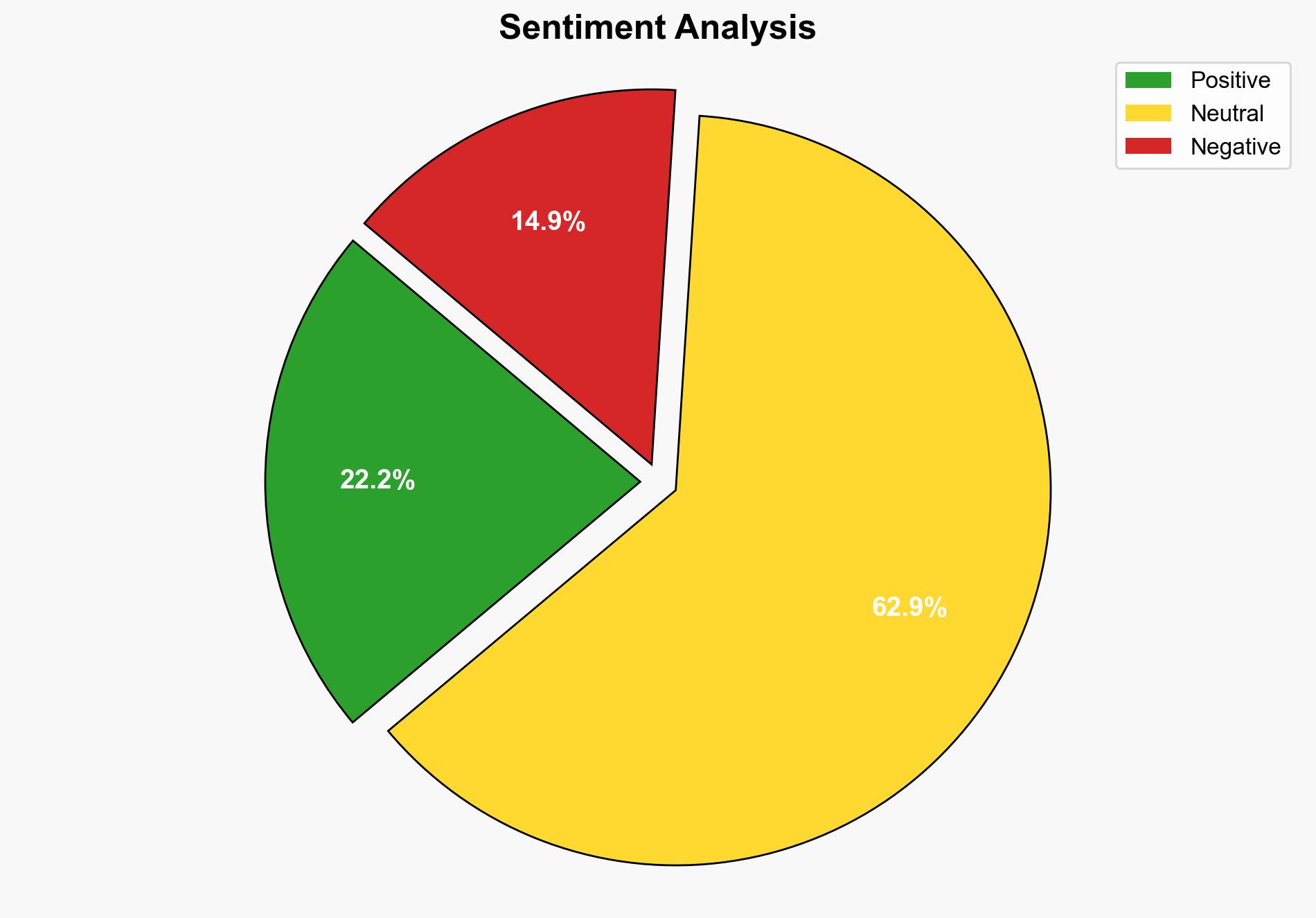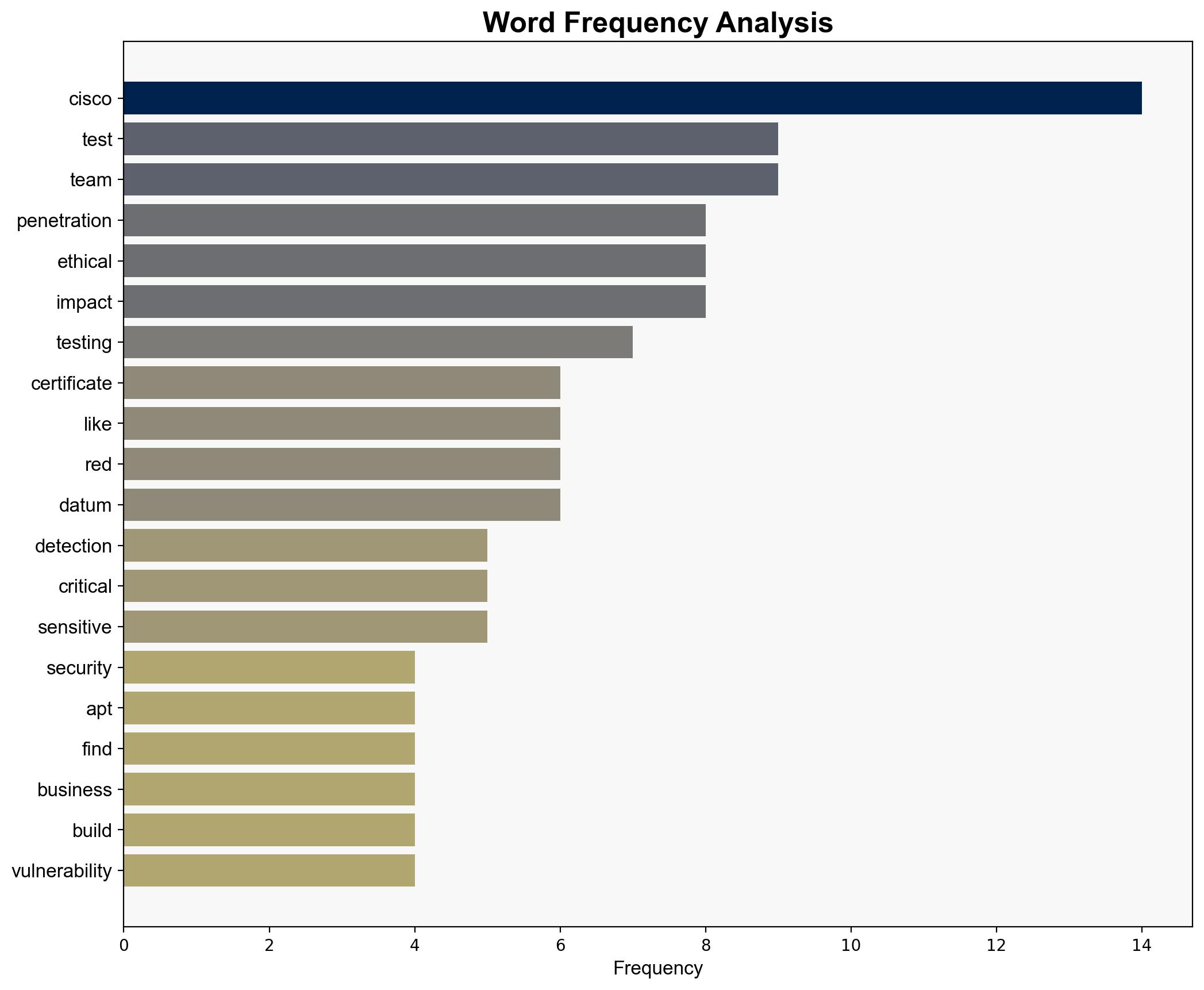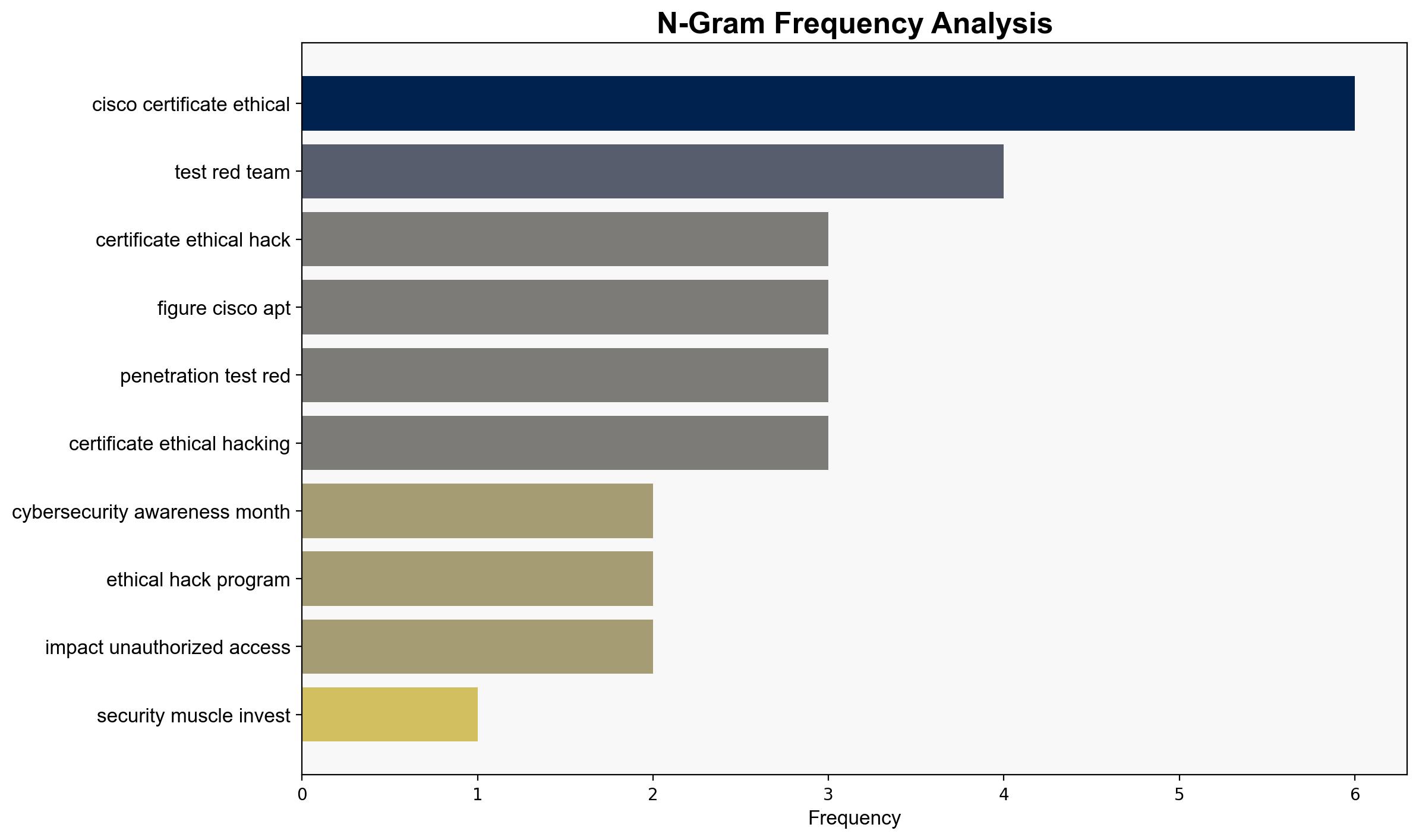Think Like an Adversary How Cisco Safely Finds the Flaws Attackers Will Exploit – Cisco.com
Published on: 2025-10-15
Intelligence Report: Think Like an Adversary How Cisco Safely Finds the Flaws Attackers Will Exploit – Cisco.com
1. BLUF (Bottom Line Up Front)
Cisco’s approach to cybersecurity, which emphasizes adversary simulation and penetration testing, is strategically sound and likely to enhance organizational resilience against cyber threats. The hypothesis that Cisco’s methodology effectively mirrors real-world attacker tactics is better supported. Confidence level: High. Recommended action: Organizations should adopt similar adversary-focused testing methodologies to preemptively identify and mitigate vulnerabilities.
2. Competing Hypotheses
1. **Hypothesis A**: Cisco’s adversary simulation and penetration testing accurately replicate real-world attacker tactics, thereby effectively identifying and mitigating potential vulnerabilities.
2. **Hypothesis B**: Cisco’s methodology, while comprehensive, may not fully capture the evolving tactics of sophisticated attackers, leaving some vulnerabilities unaddressed.
Using ACH 2.0, Hypothesis A is more supported due to Cisco’s structured approach, including the use of MITRE ATT&CK frameworks and real-time testing environments. Hypothesis B lacks support as the methodology’s adaptability and comprehensive nature are well-documented.
3. Key Assumptions and Red Flags
– **Assumptions**: It is assumed that Cisco’s methodologies are consistently updated to reflect the latest threat intelligence. Another assumption is that organizations have the necessary resources to implement these strategies effectively.
– **Red Flags**: Potential over-reliance on predefined frameworks may limit adaptability to novel attack vectors. The absence of specific case studies or metrics demonstrating the success rate of these methodologies could indicate a gap in validation.
4. Implications and Strategic Risks
The adoption of adversary-focused testing can significantly reduce the risk of cyber breaches, enhancing national security and economic stability. However, failure to adapt to rapidly evolving threats could lead to significant vulnerabilities. The psychological impact of continuous testing on cybersecurity teams could also affect performance and morale.
5. Recommendations and Outlook
- Organizations should integrate adversary simulation into their cybersecurity strategies, ensuring continuous updates to methodologies.
- Develop metrics to evaluate the effectiveness of these simulations in real-world scenarios.
- Scenario-based projections:
- Best Case: Organizations preemptively identify and mitigate all critical vulnerabilities, leading to a significant reduction in successful cyber attacks.
- Worst Case: Over-reliance on static frameworks results in missed novel attack vectors, leading to significant breaches.
- Most Likely: Continuous adaptation and improvement of methodologies lead to a moderate reduction in vulnerabilities, with occasional successful attacks.
6. Key Individuals and Entities
This report does not specify individuals by name. The focus is on Cisco’s cybersecurity teams and methodologies.
7. Thematic Tags
national security threats, cybersecurity, counter-terrorism, regional focus




